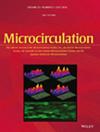Lymphatic vessels and blood vessels have some similarities in structure, but they have distinct contraction characteristics and functions. Revealing the detailed transcriptional differences of lymphatic, artery and vein are required for circulation research.
The tissues of the mesenteric lymphatic, artery, and vein were collected from Wistar rats. The transcriptome signatures of these tissues from RNA-seq (RNA sequencing) were analyzed using bioinformatic methods.
GO (gene ontology) enrichment showed the three tissues have distinct gene expression patterns in extracellular matrix, cell adhesion molecule binding, receptor ligand activity, and contractile fiber. The genes involved in cell contractility were also differently expressed, which were enriched into the KEGG (Kyoto Encyclopedia of Genes and Genomes) pathways of cytoskeleton in muscle cells, vascular smooth muscle contraction, and renin-angiotensin system. Through PPI (protein–protein interaction) analysis, we identified 43 differently expressed hub genes in the three tissues. Thirty-four transcription factors and cofactors were identified as important for the normal function of the three tissues. Furthermore, we screened out 20 potential marker genes for each tissue.
Our study described the transcriptome signatures of mesenteric lymphatic, artery, and vein, shedding light on the distinct contraction mechanisms of these tissues. These results also provided potential therapeutic targets for circulation diseases and potential markers for lymphatic and blood vessel studies.


